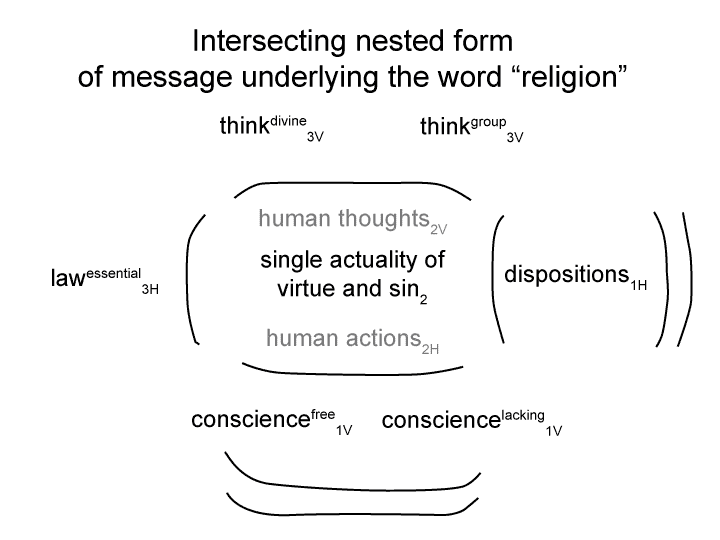[Let me conduct a thought experiment:
I choose this scenario as a plain example of self-destruction and a tangible embodiment of the negative character of sin.
A creature realizes itself by committing suicide.
The thought probe wonders: Does the creature cease to exist?
For the creature itself, the answer must be “yes”.
The creature is actual. It obeys the laws of non contradiction.
In the realm of the spontaneous order, the answer is “maybe”, because, even though the creature ceases to exist, the spontaneous order adapts to both the existence and disappearance of the creature. The spontaneous order also belongs to actuality.
In the realm of “God Recognizes Himself (that is, of creation)”, “the manifestation of the creature’s existence at one time in the spontaneous order, plus its fate,” cannot be erased, because it has become embedded in “God Recognizing Himself”.
So the answer must be “no”, the creature’s fate is traced in God’s Own Recognition.
This can be depicted in nested form.
God Recognizing Himself3( spontaneous order & creature2( the potential inherent in the creature1))]

